A-Z List of Free SEDL Publications
Below is a list of SEDL publications available free online. There are additional publications available in the SEDL Store, where SEDL lists the publications available for sale.
There are 252 free resources available to you.
Click here to show publications starting with the letter or number:
A, B, C, D, E, F, G, H, I, J, K, L, M, N, O, P, R, S, T, U, V, W, Y
| School Finance Adequacy: The State Role: (Insights on Education Policy, Practice, and Research, Number 16) (2004) Perhaps the most visible school finance issue today is adequacy. Defined as the provision of adequate resources to enable all children to meet a stateÕs proficiency standards, school finance adequacy is being addressed in some way in almost every state, especially since the No Child Left Behind Act (NCLB) has upped the ante with its Adequate Yearly Progress provisions. At the same time, most states and districts are facing reduced revenue growth and tighter budgets. State governments in particular feel this pinch because in recent years they have assumed increased fiscal responsibility for funding education. In this issue, we discuss how adequacy can be determined and the challenges it presents to policymakers. | 
|
| Schools as Learning Communities: Issues About Change, Volume 4, Number 1 (1994) This publication describes how four principals transformed an urban elementary school in New Orleans into a learning community, with the help of parents, students, and faculty. | 
|
| Science As Inquiry: Classroom Compass - Volume 2 Number 1 (1995) This newsletter for teachers concentrates on discovering new science understanding which focuses on science and mathematics for all. | 
|
| Science in Afterschool: An Instructor's Guide to the Afterschool Training Toolkit (2008) The five promising practices in afterschool for science identified in the Afterschool Training Toolkit are as follows: Investigating Science Through Inquiry; Exploring Science Through Projects and Problems; Integrating Science Across the Curriculum; Engaging Families and Communities in Science; Tutoring to Enhance Science Skills. When used with the Afterschool Training Toolkit, the lessons in this instructor’s guide will help you master these promising practices. Once you become proficient at these practices, you should be able to use them to develop other science lessons. | 
|
| Secondary Content-Area Literacy: Time for Crisis or Opportunity for Reform?: Texas Comprehensive Center Briefing Paper, Number 12 (2012) This brief examines the critical need to implement instruction at the secondary level around adolescent, or content-area, literacy. The challenge is to connect the teaching of literacy to the rest of the secondary education improvement agenda. | 
|
| SEDL 2007 Annual Report: Teach. Discover. Solve. Engage. Learn. (2008) 2007 was a memorable year for SEDL. Read about our work in the Recovery School District in New Orleans, about how we train early-career researchers, about our work to change schools in Texas, and much more in SEDL's 2007 annual report. | 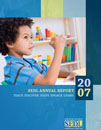
|
| SEDL 2008 Annual Report: Innovative Strategies, Winning Results (2009) Our 2008 annual report shares SEDL's accomplishments for the year. Highlights include showing teachers in rural New Mexico how to integrate technology into instruction, providing professional development resources for afterschool leaders and instructors, and helping education leaders find effective ways to implement Response to Intervention. | 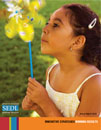
|
| SEDL 2009 Annual Report: Solving Problems, Changing Lives (2010) Our 2009 annual report shares SEDL's accomplishments for the year. Highlights include conducting research studies of reading programs, providing training for disability researchers, and leading professional development to help teachers improve classroom instruction in South Carolina schools. | 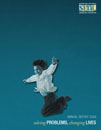
|
| SEDL 2010 Annual Report: Roadmaps to Results (2011) SEDL's 2010 annual report provides an overview of our successes and achievements for the past year. Highlights include our national research projects, the ongoing work of our two comprehensive centers, and our fee-for-service work with districts and schools to improve teaching and learning. | 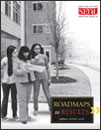
|
| SEDL 2011 Annual Report: Getting the Edge (2012) Our 2011 annual report provides an overview of our successes and achievements for the past year. Highlights include the ongoing work of our comprehensive centers in building state capacity, our fee-for-service work with districts and schools to improve teaching and learning, our upcoming revision of Paso Partners (renamed Mosaic), and our research and evaluation work. | 
|
| SEDL 2012 Annual Report: Open the Possibilities (2012) Highlights of our 2012 annual report include accomplishments of our Center for High-Performing Schools, the work of our Southeast and Texas Comprehensive Centers, news on SEDL's Center on Knowledge Translation for Disability and Rehabilitation Research, and an update on our Louisiana Striving Readers Research Study. | 
|
| SEDL 2013 Annual Report: Evidence to Practice (2013) Highlights from our 2013 annual report include the innovative research alliances that are guiding the work of the Regional Educational Laboratories, the regional concerns addressed by the Southeast and Texas Comprehensive Centers, and the Center for High-Performing Schools’ research-based strategies to support improved reading outcomes for students in New Mexico. | 
|
| SEDL Insights, Vol. 1, No. 1: Leadership Actions for Transforming Schools (2013) Effective leadership is a crucial part of school improvement. Yet leaders at schools in the process of transformation often struggle with how to best guide their staff and students to better outcomes. Our experiences serving as turnaround principals in Texas and South Carolina and then working with underperforming schools while at SEDL have revealed insights on the core actions that leaders take in successfully leading school transformations. These actions can create the conditions needed to shape a school culture where teaching and learning can improve. | 
|
| SEDL Insights, Vol. 1, No. 2: Managing the Implementation of School Improvement Efforts (2013) For a school improvement initiative to succeed, education leaders must do more than adopt a new program and train staff. This issue of SEDL Insights explores steps that leaders can take to ensure the successful implementation of a new program or practice. | 
|
| SEDL Insights, Vol. 1, No. 3: Increasing the Effectiveness of Literacy Coaches (2013) Many districts turn to literacy coaches to deliver professional development, follow-up, and support in implementing evidence-based instructional practices and programs. While literacy coaches offer an effective job-embedded professional learning mechanism for teachers, districts should also provide professional development opportunities for literacy coaches This issue of SEDL Insights how education leaders can help literacy coaches have the greatest impact at their schools. | 
|
| SEDL Insights, Vol. 1, No. 4: Teaching Mathematics Conceptually (2014) Mathematics instruction in the United States has historically focused on procedures, facts, and algorithms. Because of that focus, mathematics instruction, in essence, becomes lessons in arithmetic and efficiency. While there are promising changes occurring in mathematics instruction, we still need to help both teachers and students develop a more conceptual understanding of mathematics. This issue of SEDL Insights helps educators shift from helping students memorize rules to facilitating a deeper understanding of mathematics concepts. | 
|
| SEDL Insights, Vol. 2, No. 1: Building Supportive Relationships in Afterschool (2014) Afterschool programs can help students develop knowledge to enhance academic success while also providing them with opportunities to develop social and problem-solving skills. In our work with afterschool programs, we have seen that positive relationships with school-day personnel, families, community members, and between and among program staff and students help these programs thrive. This issue of SEDL Insights explores how afterschool practitioners can build strong relationships that benefit all stakeholders. | 
|
| SEDL Insights, Vol. 2, No. 2: How Districts Can Lay the Groundwork for Lasting Family Engagement (2014) Family engagement in a student’s education can lead to improved student academic achievement, attendance, and behavior. Yet many districts and schools still struggle to form strong partnerships with the families they serve. Having a supportive district-level infrastructure is key to the success and sustainability of family engagement initiatives. | 
|
| SEDL Insights, Vol. 2, No. 3: Implementing Effective Professional Learning Communities (2014) “Professional learning communities,” the name given to teachers’ collaborative professional learning—or PLCs, as they are often called—has become so overused that we often don’t think about the term’s meaning. Only when teachers reflect on their instructional practice, consider the impact instruction has on students, and implement insights gained from a meeting to improve their teaching performance, can this process be called a professional learning community. This issue of SEDL Insights explores ways that education leaders can guide their staff in the implementation of effective PLCs. | 
|
| SEDL Insights, Vol. 3, No. 1: Teaching Content-Area Literacy and Disciplinary Literacy (2015) This issue of SEDL Insights focuses on two types of literacy that are crucial to helping students become college and career ready: content-area literacy and disciplinary literacy. | 
|
| SEDL Letter Volume XXI, Number 1: Improving School Performance (2009) School improvement isn’t just about schools. It’s also about students and teachers, and how education leaders at all levels—state, district, school, and classroom—work together to help students succeed. This issue of SEDL Letter explores school improvement in a variety of areas. | 
|
| SEDL Letter Volume XXII, Number 1: Science, Technology, and Math (2010) In this issue of SEDL Letter, we address challenges and solutions related to science, technology, engineering, and Math (STEM) instruction. We describe three different professional development projects, where SEDL content experts are helping teachers provide instruction in math, science, and technology—or some combination of the three—more effectively and in a more integrated way. We examine the importance of evaluation in helping educators identify and meet goals on STEM-related projects. We also review a research report on ways that instructors can engage students, especially those who are underrepresented in STEM fields. | 
|
| SEDL Letter Volume XXII, Number 2: Linking Research and Practice (2010) New challenges and opportunities in the area of research use have prompted us to explore how practitioners use research and evidence to inform their work. This issue of SEDL Letter examines what researchers themselves have learned about the use of education research over the past several years, how the use of data is shaping instruction, and knowledge translation in the Disability Research to Practice program. We also provide an interview with the Institute of Education Sciences’ communications director, Tracy Dell’Angela. | 
|
| SEDL Letter, Vol. XVI, No. 2: Changing High Schools, Changing Our Future (2004) This issue of SEDL Letter explores how high schools are creating new learning environments to better meet the needs of a changing student population. | 
|
| SEDL Letter, Volume XIV, Number 3 (Dec. 2002): Putting Reading First (2002) This issue of SEDL Letter focuses on early reading instruction and assessment, including topics such as reading and migrant students and the importance of phonemic awareness. | 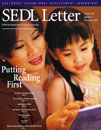
|
| SEDL Letter, Volume XIX, Number 1: Developing a Staff of Learners (2007) This issue of SEDL Letter examines various forms of on-the-job professional development as well as standards of effective professional development. | 
|
| SEDL Letter, Volume XIX, Number 2 (Oct. 2007): Reading: Practices to Help Improve Instruction (2007) This issue of SEDL Letter examines ways to strengthen literacy through father-child interactions and systemic approaches, including Response to Intervention and school improvement. | 
|
| SEDL Letter, Volume XV, Number 1 (Dec. 2003): Improving Achievement In Mathematics and Science (2003) This issue of SEDL Letter examines issues related to improving math and science achievement, including the importance of providing a foundation in algebraic thinking well before high school. | 
|
| SEDL Letter, Volume XVII, Number 1: Reaching Our Reading Goals (2005) This issue of SEDL Letter is devoted to topics related to reading instruction, including the role of literacy coaches, how to motivate readers, and instruction to improve comprehension. | 
|
| SEDL Letter, Volume XVII, Number 2: Leadership for Learning (2005) This issue of SEDL Letter discusses strategies that can help education leaders ensure that students are well served. | 
|
| SEDL Letter, Volume XVIII, Number 1: Time for Achievement - Afterschool and Out-of-School Time (2006) Afterschool and out-of-school programs across the country are providing students with more than a place to hang out after school. In this issue of SEDL Letter, read about promising practices and new research findings related to afterschool programs. | 
|
| SEDL Letter, Volume XVIII, Number 2: A Culture of Data (2006) Building a culture of quality data means administrators, teachers, and other staff members must have access to the data they need and must know how to analyze the data and use it to make instructional decisions. The current issue of SEDL Letter examines these issues. It looks at a recent research study about state data and discusses how school staffs can take the first steps in learning to analyze data effectively. | 
|
| SEDL Letter, Volume XVIII, Number 3: 40 Years of SEDL's Building Knowledge to Support Learning (2006) This issue of SEDL Letter celebrates SEDL's history and touches upon new work. | 
|
| SEDL Letter, Volume XX, Number 1 (April 2008): Making the Most of Middle School (2008) This issue of SEDL Letter tackles issues facing middle school educators—the lack of a national policy addressing these years, how U.S. middle schoolers are falling behind in math compared to their peers abroad, whether we should return to a K–8 system, and how afterschool programs can support middle schools. | 
|
| SEDL Letter, Volume XX, Number 2 (Aug. 2008): Afterschool, Family, and Community (2008) This issue of SEDL Letter is devoted to topics centered around afterschool and family and community involvement, with a focus on what the latest research shows. | 
|
| SEDL's Working Systemically Model: Final Report (2006) From December 2000 through December 2005, the Southwest Educational Development Laboratory (SEDL) developed and refined a systemic model to improve student achievement in reading or mathematics in sites composed of low-performing districts and schools. This report describes the Working Systemically model developed under this contract, presenting analyses of data related to its impact in 12 sites distributed across SEDL's five-state region. | 
|
| Shared Features of High-Performing After-School Programs: A Follow-Up to the TASC Evaluation (2005) This study examined high-performing after-school projects funded by The After-School Corporation (TASC), to determine what characteristics, if any, these projects shared. Evaluators reanalyzed student performance data collected during the multiyear evaluation of the TASC initiative to identify projects where the TASC afterschool program was especially likely to have contributed to improvements in studentsÕ academic achievement. | 
|
| Site-Based Decision-Making: Its Potential for Enhancing Learned Outcomes: Issues About Change, Volume 1, Number 4 (1991) This paper defines site-based decision-making, looks at new roles developed when site-based decision-making takes place, and explains how site-based decision-making is linked to learner outcomes. | 
|
| Southeast Comprehensive Center eBulletin, Volume 1, Number 1: Rapid Response Services (2006) | 
|
| Southeast Comprehensive Center eBulletin, Volume 2, Number 1: Teaching Academic English to Ensure the Success of English Language Learners (2007) This issue of eBulletin, published quarterly, focuses on strategies for helping English language learners (ELLs) develop academic English. | 
|
| Southeast Comprehensive Center eBulletin, Volume 2, Number 2: The Challenge of Educational Leadership (2008) The message for leaders is clear—relationships matter, and character counts. Time must be spent developing and mentoring strong ethical leaders who understand that trusting relationships among adults and among children and adults will determine the success of our students. The challenges for educational leadership are many, but the journey toward best responses is interesting and important work. | 
|
| Southeast Comprehensive Center eBulletin, Volume 2, Number 3: Teacher Quality Reports and Resources (2008) | 
|
| Southeast Comprehensive Center eBulletin, Volume 3, Number 1: School Turnarounds-Recommendations, Actions, and Results (2008) This issue of the Southeast Comprehensive Center eBulletin provides information from the Center on Improvement & Innovation and the Institute for Education Sciences regarding evidence-based practices for turning around chronically low-performing schools. | 
|
| Southeast Comprehensive Center eBulletin, Volume 3, Number 2: Effective Interventions for Dropout Prevention (2008) This edition of the Southeast Comprehensive Center eBulletin highlights effective interventions for dropout prevention. | 
|
| Southeast Comprehensive Center eBulletin, Volume 3, Number 3: Final Report of National Mathematics Advisory Panel (2009) Student effort matters! This is just one of the findings of the National Mathematics Advisory Panel in its 2008 report titled Foundations for Success—The Final Report of the National Mathematics Advisory Panel. This 120-page report addresses one central question: How can schools in the United States improve mathematics curriculum, instruction, assessment, teacher training and support so that all American students learn mathematics so that they can compete with students from other nations? In the report, the advisory panel discusses 45 findings and recommendations on key topics, such as instructional practices, materials, professional development, and assessments. The authors stress the importance of knowledgeable teachers, effective instruction, effective assessment, and the need for rigorous research in mathematics education. | 
|
| Southeast Comprehensive Center eBulletin, Volume 3, Number 4: SECC RtI Funding (2009) In February, 2009, SECC convened key leaders from SEAs in six southeastern states to discuss various approaches to funding Response to Intervention (RtI) during a summit held in Atlanta, GA. Participants attended an interactive session by representatives of various offices in the U.S. Department of Education (Title I, Title III, and the Office of Special Education Programs) to gain insight into fiscal policies that support the implementation of RtI and what is allowable under specific provisions of federal law. Based on information from SECC's evaluation and debriefing session on the summit, this edition of the SECC eBulletin discusses important lessons that were learned. | 
|
| Southeast Comprehensive Center eBulletin, Volume 4, Number 1: Improving Teacher Quality and Equitable Distribution of Effective Teachers (2009) In this edition of the Southeast Comprehensive Center (SECC) eBulletin we highlight the issues of teacher quality and the equitable distribution of effective teachers. We hope that the information included in this issue will provide you details on research and practice occurring both nationally and within our region. Be sure to read the stories from our states about their work in this area to find some innovative strategies for addressing both the teacher effectiveness issue and the teacher shortage issue that exists in some areas. | 
|
| Southeast Comprehensive Center eBulletin, Volume 4, Number 2: Adopting Rigorous College- and Career-Ready Standards and High-Quality Assessments (2009) In this edition of the eBulletin, we highlight the issues of raising standards, ensuring access to rigorous curricula and assessments, and ensuring that every child is both work and college ready upon graduation. With the increased emphasis placed on these issues in recent years through the No Child Left Behind Act of 2001 (NCLB) and the American Recovery and Reinvestment Act, and through a growing body of research in this area, our nation is actively addressing the issues of college and work readiness. | 
|
| Southeast Comprehensive Center eBulletin, Volume 4, Number 3: Turning Around Low-Performing Schools (2010) This issue of the Southeast Comprehensive Center eBulletin summarizes some of the best practices in turning around schools and provide readers with references and resources to gain a deeper knowledge of the literature on turning around low-performing schools and strategies to help state departments and districts in their attempt to reform challenging schools. | 
|
| Southeast Comprehensive Center eBulletin, Volume 5, Number 1: Strengthening Literacy Programs and Instruction (2010) This issue of the Southeast Comprehensive Center eBulletin focuses on literacy, specifically on how states can strengthen their literacy programs or plans and provide effective professional development and technical assistance for high-need districts in their efforts to implement quality literacy instruction. | 
|
| Southeast Comprehensive Center eBulletin, Volume 5, Number 2: Increasing High School Graduation Rates and Improving College Enrollment for High-Need Students (2011) This edition of the Southeast Comprehensive Center eBulletin highlights data on high school graduation rates. | 
|
| Southeast Comprehensive Center eBulletin, Volume 5, Number 3: Improving School Readiness and Success for Children (2011) In this edition of the Southeast Comprehensive Center (SECC) eBulletin we highlight school readiness, how early experiences matter, the role of preschool in supporting readiness, and state and local efforts to implement recommendations from the National Governors Association (NGA). | 
|
| Southeast Comprehensive Center Spotlight (2009) The Southeast CC Spotlight highlights resources, materials, technical assistance, and professional development services offered by the Southeast Comprehensive Center (SECC) at SEDL. The newsletter also focuses on the work that SECC does with the states of Alabama, Georgia, Louisiana, Mississippi, and South Carolina to build their capacity to implement the programs and goals of the No Child Left Behind Act of 2001 (NCLB). | 
|
| Southeast Comprehensive Center Spotlight, Volume 1, Number 3: Early Childhood Education Programs and Curricula for PreK Students (2008) This issue of the Southeast Comprehensive Center Spotlight newsletter summarizes the Rapid Response research document of the same title. | 
|
| Staff Development and Change Process: Cut from the Same Cloth: Issues About Change, Volume 4, Number 2 (1994) This informative document spells out the firm relationship between effective staff development and successful change programs. It covers six success strategies that can help ensure your staff development program will serve as a potent motivator of school change initiatives. | 
|
| State Mathematics and Science Curriculum Framework Development & Implementation: A Case Study Synthesis (1997) This study compares and contrasts the development and implementation frameworks in 16 states, Puerto Rico, and the U.S. Virgin Islands. | 
|
| Stepping Stones: A Texas Migrant Early Childhood Program for 3- and 4-Year-Olds (2012) This home-based migrant preschool program provides 100 lessons aligned to the Revised Texas Prekindergarten Guidelines. The lessons, available in both English and Spanish, are organized around early learning themes or units. A manual to guide home educators and migrant program coordinators is included. | 
|
| Students: How They View Learning and Their Schools: Issues About Change, Volume 5, Number 3 (1995) This concise summary of SEDL case studies reveals how students define successful learning, how students perceive classroom relationships, what motivates students to succeed in school, how students see teachers' actions as helpful to learning, and how students wish their teachers would act. | 
|
| Superintendents of Small Districts and School Improvement: Planning, Providing Resources, and Professional Development: Issues About Change, Volume 3, Number 1 (1993) This paper details how the superintendents of rural and small school districts planned for and provided resources and staff development—and how they used these improvements to implement successful school change. | 
|
| Support Student Transition From Middle to High School: Texas Comprehensive Center Briefing Paper, Number 1 (2010) This brief was developed by SEDL's Texas Comprehensive Center to answer the question, "What strategies can be implemented to aid students and their parents in the transition from eighth grade into high school?" The transition from eighth grade to high school results in a higher drop-out rate and more grade retentions than any other grade. However, when districts and schools develop and implement a sound transition program, the outcomes for ninth graders are improved. | 
|
| Supporting Sustainability Efforts in School Turnaround (2013) Staff members from states in the Southeast Region met with their counterparts in the area of school turnaround and learned from experts in the field from the U.S. Department of Education and other organizations. | 
|
